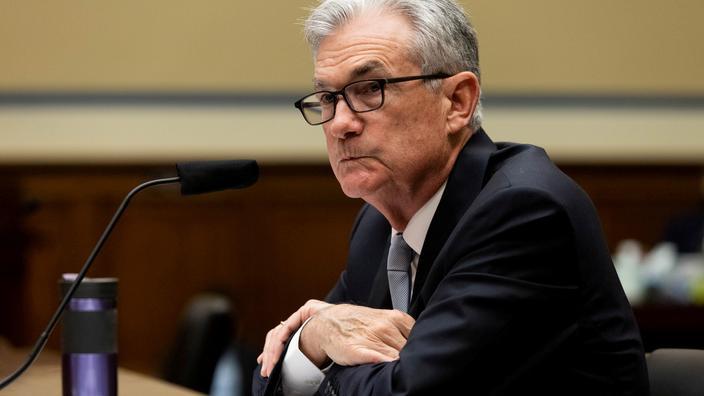Imposed a year ago, they prohibited them from carrying out share buyback programs and capped dividend payments to shareholders.
The US central bank announced Thursday that major US banks have passed stress tests with flying colors, allowing restrictions imposed during the pandemic on dividend payouts and share buybacks to be lifted.
Read also :Fed boss to discuss uneven recovery and inflation before Congress
Concretely, banks including JPMorgan Chase, Wells Fargo and Bank of America, will soon be able to issue tens of billions of dollars in dividends and share buybacks. “All of the 23 large banks tested had amounts of capital much greater than those required in view of the risks”, the Federal Reserve (Fed) said in a statement. Therefore, she adds, “The additional restrictions put in place during the Covid will end”, June 30 “In accordance” to what was announced on March 25.
The Fed imposed these restrictions a year ago, citing the need to conserve capital during the crisis. It prohibited these large establishments from carrying out share buyback programs and capped dividend payments to shareholders. This measure was to be completed initially at the end of December 2020. It had been lightened but extended initially, until March 31, then until the end of June.
Three stress tests
“Over the past year, the Federal Reserve has carried out three stress tests with several hypothetical recessions and all of them have confirmed that the banking system is well positioned to support the ongoing economic recovery.”, justified the vice-president in charge of the supervision of these tests, Randal Quarles, quoted in the press release. Stress tests were put in place by the Dodd-Frank Act after the 2008 financial crisis. Until the crisis caused by the covid-19 pandemic, they were generally carried out only once a year.
Thursday’s announcement signals some form of normalization after last year’s crisis over the spread of covid-19 that crippled not only the US economy but the global economy as well. The tests assess the resilience of large banks by estimating their losses, income or capital levels, which provide protection against losses under hypothetical conditions and over a period of nine quarters to come.
Recession and corporate debt
For these latest tests, the Fed took as a basis a severe global recession combined with significant tensions in the commercial real estate market and corporate debt. In this scenario, the unemployment rate increased by 4 percentage points to a peak of over 10% while the Fed is currently forecasting an unemployment rate of 4.5% at the end of 2021. Gross domestic product fell. , by 4% between the fourth quarter of 2020 and the third quarter of 2022. And asset prices fell sharply, “With a 55% drop in share prices”.
On the basis of these catastrophic elements, “The 23 major banks would collectively lose more than $ 470 billion, including nearly $ 160 billion in losses related to commercial real estate and business loans”, details the Fed. “However, their capital ratios would drop to 10.6%”, which would remain more than double the minimum rate required.
– .


